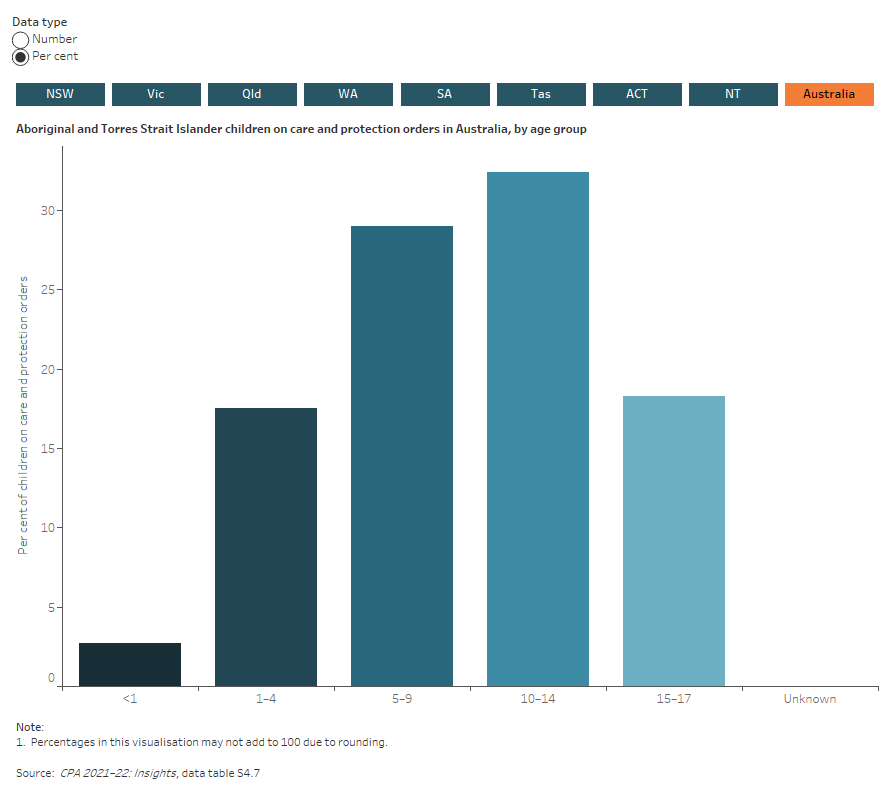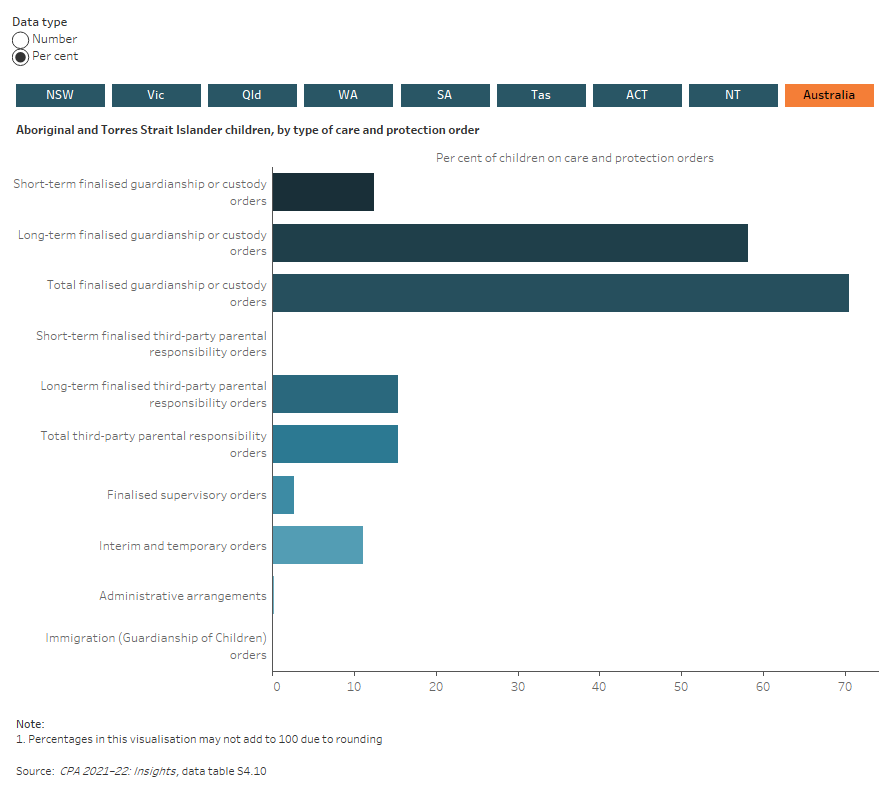Care and protection orders
Care and protection orders are legal orders regarding the care and protection of a child or young person. These orders can include various provisions depending on the jurisdiction. One of the powers under care and protection orders are to confer the day-to-day responsibility of the child to parents, child protection departments and other nominated carers.
Children may be placed on a child protection order following a substantiation assessment. However, not all substantiations lead to a care and protection order, for example, if the parents are assessed to be willing and able to protect the child from further maltreatment, non-statutory support may be provided.
In 2020–21 of the Aboriginal and Torres Strait Islander children who were the subject of a substantiation, around one-quarter (3,900) were placed on a care and protection order within 12 months following a substantiation.
Source: CPA 2021–22: Insights, data table S4.2.
Refer to the Care and protection orders section of CPA 2021–22: Insights for more information.
How many children were on care and protection orders?
Across Australia, at 30 June 2022, around 24,600 Aboriginal and Torres Strait Islander children were on a care and protection order. Children aged 10–14 years were the most common age group for care and protection orders (32% or 8,000 children) followed by children aged 5–9 years (29% or 7,100 children) (Figure 3).
Source: CPA 2021–22: Insights, data table S4.7.
Over the 2021–22 reporting period, around 3,900 children were discharged from care and protection orders. Of these:
- 21% (810 children) were continuously on an order between 2 and 4 years
- 24% (930 children) were continuously on an order for 8 years or more.
Source: CPA 2021–22: Insights, data table S4.4.
Figure 3: Aboriginal and Torres Strait Islander children on care and protection orders, by age group
This interactive data visualisation shows the number of children who were on a care and protection order at 30 June 2022, by age group. Data are displayed for each state and territory and Australia.

The most common care and protection order for Aboriginal and Torres Strait Islander children at 30 June 2022 were finalised guardianship orders (71% or 17,300 children). In finalised guardianship orders the day-to-day responsibility of the child is given to a nominated carer, though the legal responsibility for the child remains with the child protection department or non-government agency.
Source: CPA 2021–22: Insights, data table S4.10.
The second most common order type were third-party parental responsibility orders (15% or 3,800 children). In these orders both the day-to-day responsibility and legal responsibility is given to nominated carers approved by the courts (Figure 4).
Source: CPA 2021–22: Insights, data table S4.10.
Of the 3,800 Aboriginal and Torres Strait Islander children on third-party parental responsibility orders at 30 June 2022:
- one-quarter (25% or 960) were living with Aboriginal and Torres Strait Islander relatives or kin
- 46% (1,700) were living with non-Indigenous relatives or kin.
Source: CPA 2021–22: Aboriginal and Torres Strait Islander children, data table 10.3.
Figure 4: Aboriginal and Torres Strait Islander children, by type of care and protection order
This interactive data visualisation shows the number of children who were on a care and protection order at 30 June 2022, by type of care and protection order. Data are displayed for each state and territory and Australia.

Has the number of children on care and protection orders changed over time?
Between 30 June 2018 and 30 June 2022, the rate of Aboriginal and Torres Strait Islander children on care and protection orders increased from 62 per 1,000 Aboriginal and Torres Strait Islander children to 72 per 1,000.
Source: CPA 2021–22: Insights, data table T2.


